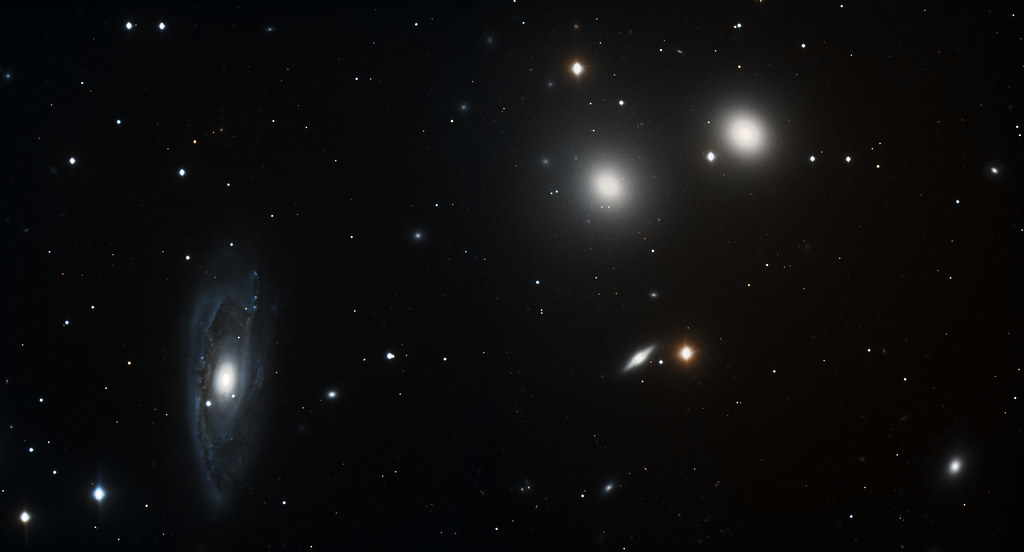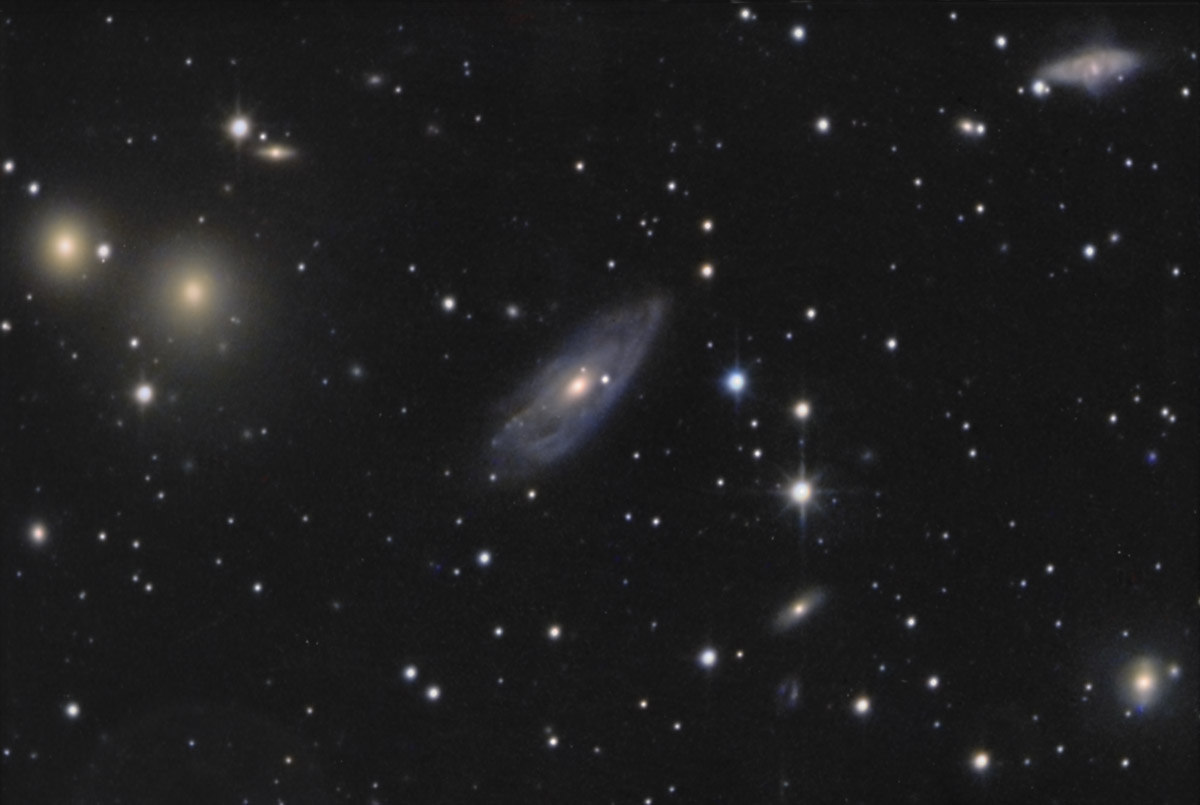Post
by Ann » Sat May 12, 2012 6:28 am
Interesting.
As a color freak, I must extract as much information as I possibly can from the color of the picture. The first thing I noticed was that the overall color of the "blue" spiral galaxy (NGC 3312) seems to be extremely similar to the overall color of the "yellow" elliptical galaxies (NGC 3311 and 3309). The yellow bulge of NGC 3312 seems to be an almost deeper yellow color than the central parts of the elliptical galaxies, and the huge extended halos of the ellipticals appear to be grayish in color. The disk of NGC 3312 is not very blue in this picture, but more grayish, too. Fascinatingly, my software confirms that the large spiral and the two largest ellipticals have almost identical B-V indexes, although the spiral galaxy is bluer (but not very blue) in U-B.
What does that mean? Well, a reason for the rather non-blue B-V index of NGC 3312 is probably that we see it highly inclined, so that a lot of the dust of NGC 3312 is in our line of sight, reddening the galaxy. The very yellow color of the bulge of NGC 3312, compared with the paler yellow color of the centers of the two large ellipticals, could also be due to more dust even in the bulge of NGC 3312 than in the centers of the ellipticals.
But what about the almost identical gray color of the disk of NGC 3312 and the halos of the ellipticals? It is fascinating to think that stellar populations of the disk of the spiral and the halos of the ellipticals are not so different. However, I think we are looking at different phenomena. The disk of NGC 3312 is probably strongly dominated by an intermediate population, with large numbers of F- and G-type stars, similar to Procyon and, indeed, the Sun. The halos of the ellipticals, on the other hand, might contain a considerable number of very old metal-poor stars, which spend part of their lives as bright blue horizontal branch stars.
My impression of NGC 3312 is that it is not very blue and not very active in star formation. It definitely contains a number of young stars, but not necessarily that many. In spite of its inclined position its far infrared magnitude is fainter than its blue magnitude, which suggests that it is running out of fresh gas and dust. And its not impressively blue U-B value suggests that there aren't that many hot ultraviolet stars in there.
The fascinating overlapping galaxy pair, NGC 3314, looks bluer to me than either NGC 3312 or the large ellipticals. The apparent blue color of NGC 3314 is probably due to the fact that the smaller foreground spiral galaxy has a small and not very bright yellow bulge, and it blocks the probably larger and brighter yellow bulge of the background galaxy from our view.
It is very interesting to compare the color of the foreground Milky Way stars with the color of the background galaxies. The fainter of the prominent foreground stars is a late K-type star, and the brightest of the foreground stars is an even redder M-type star. If the bulges of the galaxies had been crammed full of stars similar to the two bright Milky Way stars in this picture, then the bulges of the galaxies would have been very deeply orange in color. Bear in mind that the galaxies are far away and redshifted due to the expansion of the universe, and they are also sitting behind millions of light-years of dust, which must also redden the color of them. Therefore they must look considerably yellower than if they had been nearby. Yet the bulges and the centers of the galaxies are paler, less yellow, than the foreground M-type star. Therefore the light output of the galaxies is dominated by stars less red than the two Milky Way foreground stars.
Note, in the picture, a line of Milky Way stars that seem to rise from the left side of the large spiral galaxy, NGC 3312. First there is a blue star, then there is a small orange star and then there is a larger orange star. Then there is a galaxy, and then there is something that looks like a blue coffee bean! Either it is a very strange thing in the Milky Way, possibly a planetary nebula, or else it is two interacting and starforming galaxies.
Finally, remember that NGC 3314 consists of two overlapping galaxies, one at 117 million light-years and one at 140 million light-years away. I wonder if NGC 3312, the large spiral galaxy, is not also a foreground object around 117 million light-years away or so, while the ellipticals may be around 140 million light-years away. My software agrees that that may be the case.
Ann
Last edited by
Ann on Sat May 12, 2012 5:14 pm, edited 1 time in total.
Color Commentator
 The Hydra Cluster of Galaxies
The Hydra Cluster of Galaxies

